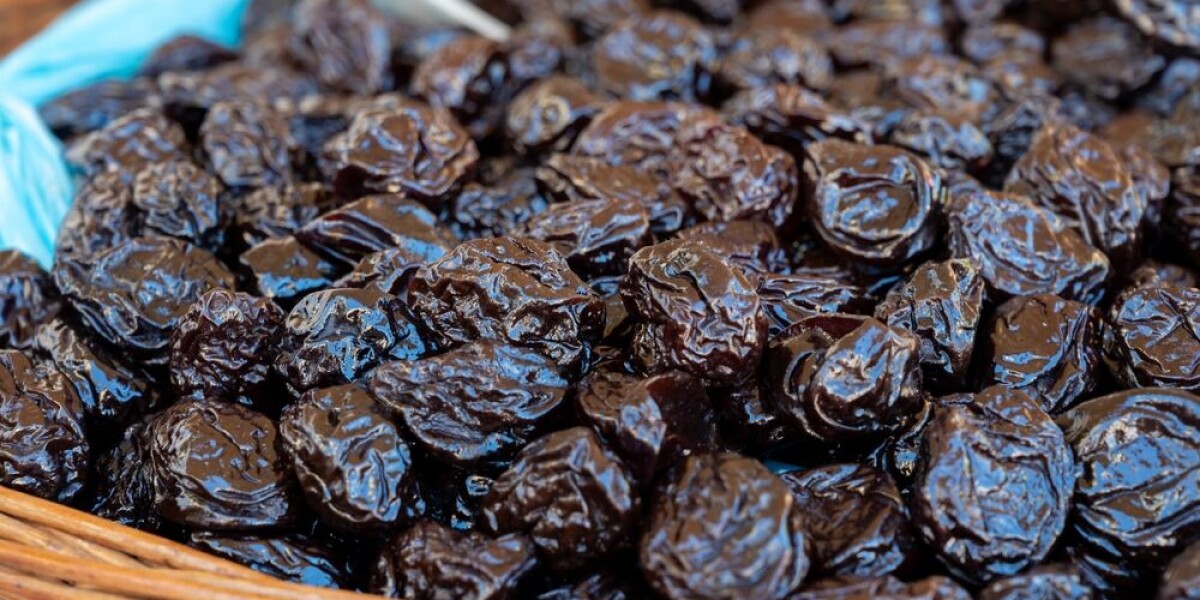
- Select a language for the TTS:
- UK English Female
- UK English Male
- US English Female
- US English Male
- Australian Female
- Australian Male
- Language selected: (auto detect) - EN
Play all audios:
SUE ADAMS LOOKS AT THE MANY USES OF THIS ANCIENT FRUIT – AND WHY HARVEST TIME IS A WONDERFUL SIGHT There is one Chinese import which has made massive inroads into France, affected the
employment of countless people and gobbled up huge areas of land. No, I am not describing open cast mining, cars or technology – I am talking about the prune. Although plums have been
present in France since at least Roman times, it was not until the 12th Century that the fruit we know today developed. At that time a variety of plum found its way from China, along the
silk roads of Asia to Syria where it is believed to have been passed on to Benedictine monks. The monks returned from the crusades to an abbey in Clairac, Lot-et-Garonne, and as a result
this department became the hub of a huge prune industry which today still produces about 45,000 tons of the fruit each year. The name given to this variety of plum was “prune d’ente”, which
stems from the word “entre” a form of early French for the word “graft” as those early plants were grafted onto local fruit tree rootstocks to encourage strong growth. Read more: How to
keep hens as part of a self-sufficient life in France CHOCOLATE AND CONSERVES Today large commercial enterprises, small farms and individuals make or augment their living by harvesting and
selling the plums or by adding value through drying them to create prunes, covering these prunes in chocolate, or by creating conserves. If you have holidayed or bought a house in
south-west France then you will have come across the local prunes as they have achieved the status of “PGI” or of Protected Geographical Indication. This means they are a recognised
regional food, traditionally grown and with at least some of any manufacturing process taking place locally. If you visit in the spring and drive through the Lot-et-Garonne countryside you
might catch sight of the plum orchards in flower – a breathtaking patchwork of white blossom. Local beekeepers will bring their hives to the prune orchards so the bees can fertilise the
flowers and gather nectar for their honey at the same time. Should you be here in August, then you may see the plums being harvested. Tractors tow long, thin trailers to the base of each
tree. The trailer opens out around the base of the tree while a mechanical arm grips the trunk, giving it a violent shake. The plums fall into the trailer which gathers them up and takes
them back to the farm or to a co-operative where the plums are dried. Often people will revisit the orchard to pick up any remaining plums by hand. TRENDY APPLIANCE If you buy an old
farmhouse in the region there is every possibility that the occupants will have grown and dried plums in the recent past. There will possibly be one or more ancient plum trees which still
yield the small, dark, red prunes d’ente. We have had plum trees within our orchards at both houses we have had in France and found the fruit is still excellent for general consumption as
well as for making chutneys and jams. You may also have an old prune oven within your own property, although these days they tend to be used for storage. The ovens contained metal racks
which could be rotated. Wooden trays containing plums were stacked in the racks which turned gently while a low fire burned beneath them over 24 hours or the prunes dried out. There had to
be someone maintaining the fire and turning the racks throughout – a job which entailed a sleepless night. Read more: How to grow redcurrants in your French garden These days, the process
is automated and the prunes travel on a belt through a band oven. Old wooden prune trays are highly prized, however, and you often see them hanging on the walls of houses or summer kitchens
as a souvenir of a property’s history. We use several of our old prune trays to dry walnuts each year – but under the sun, rather than in an oven. Should you be in the vicinity of Agen at
the end of August then you could visit their annual “Fetes D’Agen” – which originated as a celebration of the prune. On the river Garonne, Agen is the capital of the Lot-et-Garonne
department and the epicentre of the south-west’s plum orchards. Much of its wealth came from exporting prunes which started their journey from the town’s port. There is even a prune museum
at Lafitte-sur-Lot, a few kilometres from nearby Clairac .









